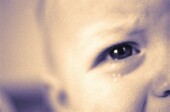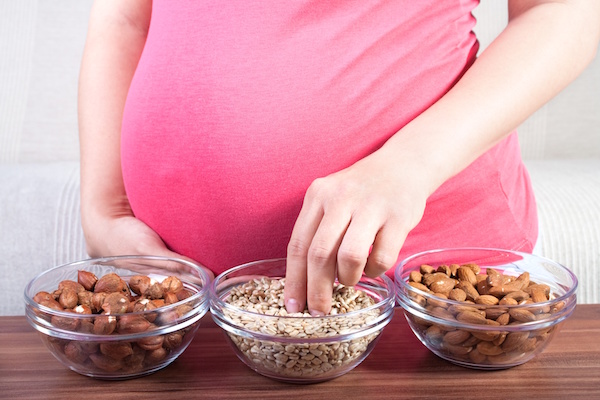
MONDAY, March 7 (HealthDay News)– The tiny victims of shaken baby syndrome are equally likely to be injured by a man or a woman, although women are less likely to be convicted of the crime, according to a new study.
Perhaps because of men’s sheer strength, the babies are also more likely to suffer graver harm if their abuser is male, and male perpetrators are more likely to confess to the crime and be convicted, the researchers found.
In data collected over 10 years on 34 cases of abusive head trauma (AHT) in infants, researchers found that abusers’ gender was evenly split and that female abusers were typically significantly older than males.
Shaken baby syndrome is the leading cause of death in abusive head trauma cases, with an estimated 1,200 to 1,400 children injured or killed by shaking each year in the United States, according to the National Center on Shaken Baby Syndrome. Injuries sustained include brain hemorrhages, skull fractures and retinal hemorrhages, a cardinal symptom of being shaken.
In this study, biological parents were the most common perpetrators, followed by the mothers’ boyfriends who were not the child’s biological father. Prior research identified male caregivers as the more likely to cause abusive head injury to infants, but lead author Dr. Debra Esernio-Jenssen said she wasn’t surprised that her study showed that half were women.
“I think there is a bias,” said Esernio-Jenssen, medical director of the Child Protection Team at the University of Florida at Gainesville. “When a child comes in who’s fussy and irritable and maybe vomiting, many pediatricians are not considering that this child could be an abusive head trauma [victim] if the child comes in with a woman.”
“I think society accepts that a man may not be a good caregiver, especially with a young infant,” added Esernio-Jenssen, also a board-certified child abuse pediatrician. “I think as a whole, society expects women to be nurturing caregivers.”
For this reason, women may be more likely to deny abusing children when confronted, the study noted. The study authors added that although men were more likely to be seen as perpetrators of shaken baby syndrome, the percentage of female abusers may be underestimated. “When asked anonymously [about abuse],” they wrote, “mothers more readily admit to shaking infants or young children within the context of soothing or disciplining them.”
The study is published in the March 7 online issue of the journal Pediatrics.
The average age of abused infants in the study was 9.4 months old, with 94 percent suffering brain hemorrhages and 82 percent from retinal hemorrhages. Two-thirds of the children were boys, and six of the 34 died from their injuries. (All the deaths were attributed to male perpetrators.)
While the perpetrators’ ages ranged from 16 to 60, the median age of females was 34 — significantly higher than the males’ median age of 27. But 15 of 17 male perpetrators confessed, compared to only three of 17 women, and 82 percent of the men were convicted.
Because male abusers are typically stronger than females, their victims’ injuries tended to be worse — and tougher to pass off as resulting from a fall or other mishap, Esernio-Jenssen said.
“My study has small numbers, but of the three women who did confess, two of their three victimswere covered with marks,” she said. “It’s harder to deny if you’re looking at a kid with marks all over them.”
Esernio-Jenssen said she thinks future research should assess the height and weight of perpetrators compared to the children to determine how size influences the degree of injuries suffered.
Dr. Randell Alexander, chief of the Division of Child Protection and Forensic Pediatrics at the University of Florida College of Medicine in Jacksonville, said it’s difficult to figure out why two-thirds of the shaken babies in the study were boys.
“It’s a pretty strong finding in general, and not very well explained,” said Alexander, who was not involved in the study. “And nobody’s going to come up with a great explanation for that. There are a few people out there who say boys need to be tougher’… I don’t think it’s most parents, and it may not explain that finding.”
Alexander said friends and family members who notice bruises on babies should be concerned about child abuse and vigilant about following up on their suspicions.
“Bruises are extremely uncommon in infants,” he said. “Accidents happen at those ages, but not too much. And if parents are aggressive with a child, that’s someone who needs immediate help.”
Parents should also be mindful of their emotions, he said, especially if they have an infant who often cries and tests their patience.
Parents “sometimes have this notion they have to do 100 percent all themselves,” Alexander said. “The most important thing is, put the baby in the crib or bassinet on their back, walk a safe distance away and wait for 10 minutes to calm down. The baby will still be crying, but they’ll survive.”
More information
For more on babies and head trauma, visit the National Center on Shaken Baby Syndrome.

